There’s a recurring theme of navigating transitory periods in Campbell Whyte’s comics. His first major work, Home Time, followed the adventures of a group of primary school friends who are suddenly washed away by their local river, later awakening in a strange, magical land. What starts as a fun fantasy adventure, slowly builds to something a bit more darker and serious, as the characters slowly realise that the world around them may not be as wonderous, carefree and safe as it seems.
Published as a two-part graphic novel series from 2017 to 2020, the Home Time books are dense tomes teeming with imagination. What really appealed to me is that each chapter is told from a different character’s point of view, and to reflect this, Whyte draws it in its own distinct art style. It’s the kind of stylistic flair that feels so uniquely comics to me.
He’s recently begun serialising his latest work, Luna Express, across various social media platforms. Taking inspiration from magical girl series like Sailor Moon, the comic is set in Perth and follows a group of best friends who’ve just graduated from high school and are navigating their entrance into adulthood – and who may or may not be responsible for destroying the world.
The work doesn’t just stop at Luna Express, either. When he isn’t making new comics he’s either teaching them at the Milktooth School of Art and Stories or hyping them up through the Perth Comics Art Festival (both of which he co-runs with his wife and fellow artist, Elizabeth Marruffo).
I recently spoke with Campbell to chat about the origins of Luna Express, how he’s experimenting with new art styles and the challenges of getting your comics published in Australia.
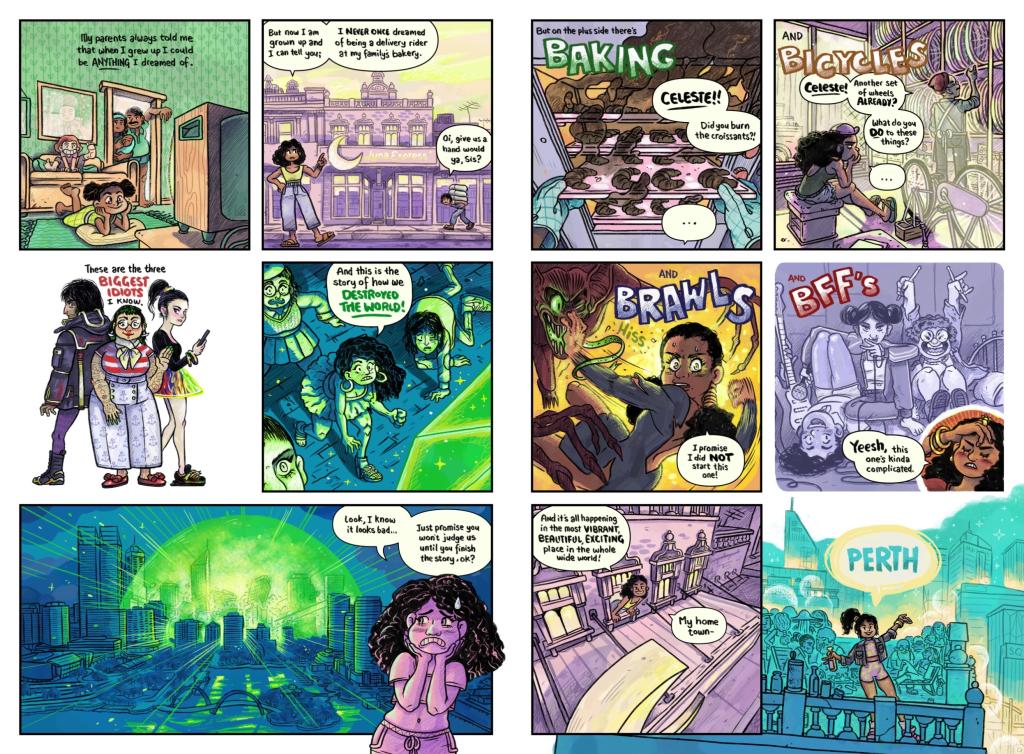
Could you give me a brief walkthrough of what Luna Express is about?
Campbell: The elevator pitch is basically “What if Sailor Moon was set in Perth?” It’s basically about a group of friends who have recently graduated high school. They were really close in high school and they’ve sort of scattered slightly. They’re starting different careers in different industries, starting their adult life. They start uncovering this nefarious scheme, that weaves between all the different industries that they’re a part of.
They are all magical, as well. They’re all celestial-themed powers, but as opposed to Sailor Moon, where they’re planetary powers, these ones are all based on speculative, hypothetical celestial bodies that never really existed. So, like mythical planets, second Earths, extra moons, or like a 10th planet in the solar system. So it’s quite fun. Home Time was my attempt at creating a mythology and examining my primary school experience., and I guess this book is me looking at that post-high school experience. It’s set now but in a slightly different Perth.
Something I really liked about Home Time is it does a really good job of capturing the uncertainty of early adolescence. When we become more aware of how the world is around us and a little less sheltered of how things really are. It sounds like Luna Express is tapping into that post-high school but still kind of pre-adult transitionary period. Is that the throughline of this book?
Campbell: Yeah, yeah, definitely. It’s those transition periods, and those are the most fraught and exciting and terrifying and exhilarating. That’s what sort of interests me in these stories that I want to tell. I think as a creator as well, I have this ridiculous, aspirational vision of a career where I’ve got books that span an entire readership’s life, in terms of like, people in late primary school will be able to read Home Time, and then people in late high school are able to read Luna Express. And then my book after that is for the next readership. I’ve also got one that’s for a younger readership. I don’t want to just keep revisiting those same periods of time. I think I’ve got things to say and ideas about all sorts of life stages that I’ve been through, and so I want to do that.
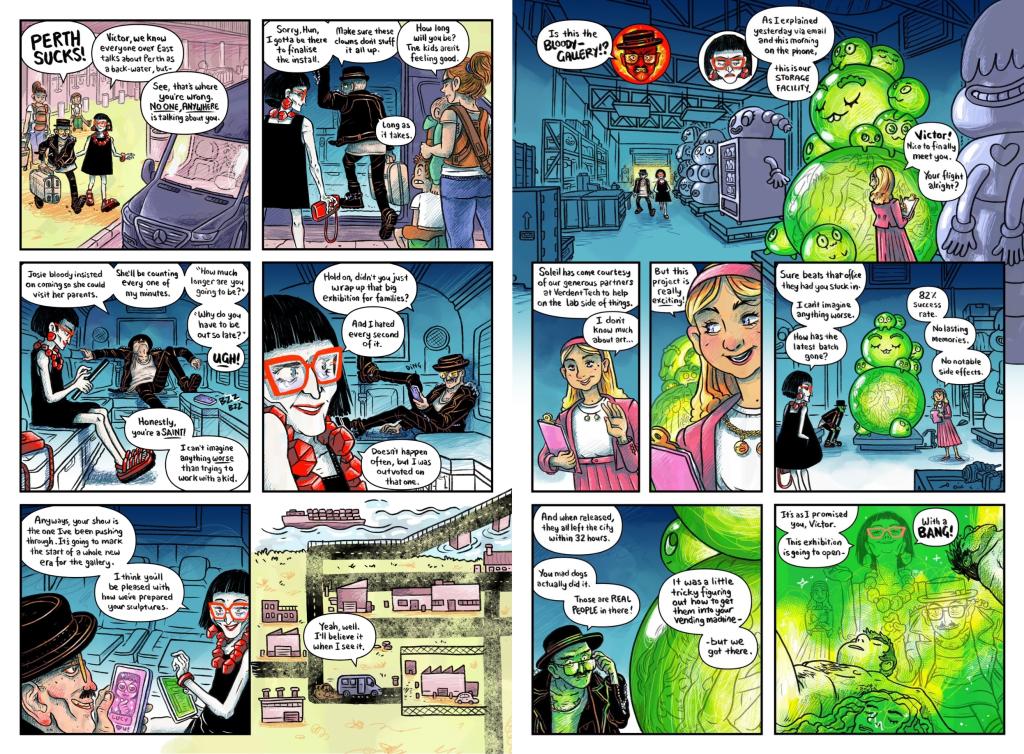
What is it about working in this young adult space that appeals to you the most?
Campbell: There are multiple things. One of them is, and I don’t mean this in a condescending way, readers that are in their early 20s and younger, they’re some of the most attentive and intense readers that you can have and ask for. I recall that when I was younger I was a really intense reader, I’d reread and reread works. I’d just pull them apart and spend so much time thinking about them. And then just as you get older, and you have more things on your plate, you have slightly less time to be able to devote to that.
And so for me, with Home Time especially, I designed it like a puzzle box ideally for myself at that age. What would I have been obsessed with? And so with younger readers that have read it, that they come to me, and they’re like, “Oh, I noticed this thing in chapter one. And then this thing in chapter seven, and in the diary, at the end of chapter four, it said this, are they all connected?” And I’m like, yeah, they are. I’ve left all these little breadcrumbs and usually, adult readers don’t pick up on that because they just don’t have the time. So for me, there’s that aspect of it, where I want to give my attention and efforts to those really dedicated younger readers.
I think there’s also space for really interesting works that are slightly surprising and a bit transgressive for those readers. I know, as a younger reader, those of the works I loved. Things that felt like maybe I shouldn’t be reading them at that age. Because it’s like a safe portal to other experiences, other ways of being and thinking.
I don’t usually go into a work with all the answers laid out, it’s a process of discovery for me. What do I need to unpack about my life and my existence? And then I build a project around it. I spend those years digging, and I don’t know if I always found an answer, but it’s that journey of discovery.
On that different vibe between younger and more adult audiences, I think younger readers are way more willing to play with ideas. Whereas adults, if you give them a book, they ask “Well, what are the rules? What’s the setup here?”
Campbell: I think there is a bit of that, for sure. I really love films and novels and comic works that are really tightly orchestrated, and they operate like the moving parts of a Swiss watch, and you get to the end, you’re like, “Oh, that was so neat and tidy”.
I also love works that are almost like a wild horse that the author is barely riding. You’re reading it and you’re very aware that they’re barely in charge of this thing that that they’ve created. And I find that really exhilarating. Sometimes at the end, it’s not particularly well resolved or it’s not that satisfying, and you can see all these ways that, oh, yes, they could improve it this way or that – but along the way, it’s such an amazing ride to go on. I’m always drawn to those sorts of works with the wildness in them.
You were talking about your journey of trying to process things. You previously did a great comic about watching Sailor Moon for the first time and how it opened an obsession because it’s something you’d never seen before. Is Luna Express a kind of meditation on what you would do with that concept and your response to this interest?
Campbell: It definitely is that. With Home Time, one of the early springboards was Harry Potter. At the height of Harry Potter fandom and mania, I was like, “What is this? What is this thing doing?” And the big question, the seed of the idea of [Home Time] was, “Well, what if this was set in Australia? How would this function?” Of course, the end story is very different, and it wove in things like the TV series Lost, in terms of character interactions. But that was the starting point. And then it was that combined with “What was my experience growing up in Perth like?”, and trying to marry that kind of auto-fictional sort of thing.
With Luna Express, it’s like, “Oh, I love this type of storytelling of the magical girl [genre] and these sort of tight friendships”. It’s combining that with what happened to me outside of high school when I was trying to start in an industry and a professional career. It’s always that duality of a genre or a world of storytelling that people may be familiar with. It’s taking that and really autobiographical elements, and then really grounding them in a sense of place. That’s really important for me. If I’ve got a formula, that’s sort of the formula for my storytelling and what really drives me.
Obviously, Sailor Moon was really influential work, and it’s a bit of X-Files as well. I was a huge X-Files fan, so that “Monster of the Week” format, which was in Sailor Moon as well, is something that’s being drawn into Luna Express.
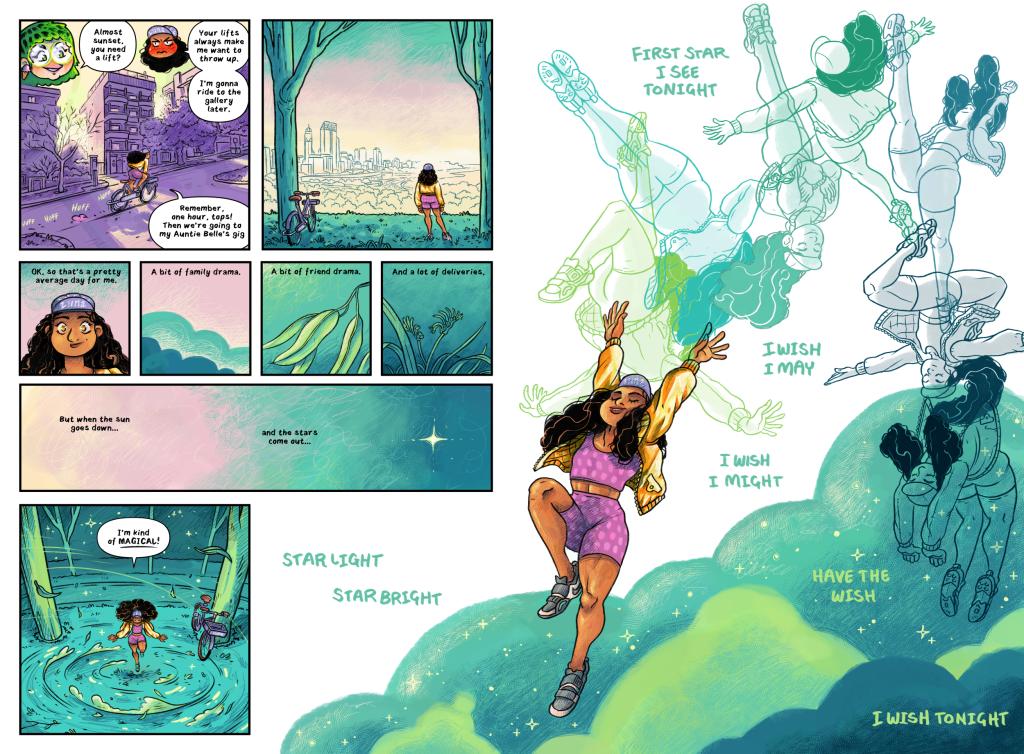
You’re currently serialising this page by page online. When you were putting this book together, was it created with that serialisation in mind – with each page kind of having to stand as its own story week to week?
Campbell: Yes, and no. So the page layout is based on a six-panel grid, which is very slice-and-diceable, and reconfigurable. That was something that I wanted to experiment with. I love formal experiments within comics. With Home Time, I came up with a whole bunch of rules that I had to abide by; all of these narrative structures that I then worked through. With Luna Express, it was a similar thing – what are the rules of this? One of them was the six-panel grid. I had always intended [Luna Express] to be somehow serialised digitally. I think it kind of works best on Instagram, where each panel is just one slide that you whip through. I’m just putting it on Instagram, Twitter, Threads and Facebook. It’s not serialised on Webtoons or anything.
I was really aware with Home Time, that when you’re working on big book projects like this, you can kind of disappear in the years that it takes. Where, if you’re not putting out smaller things, you’re just kind of semi-invisible. And so I was like, “Oh, well, I can just be drip-feeding this, because I’m making it anyway. So let’s experiment with that”. So I’m kind of aware that, regardless of whether it’s been serialised page by page, each page has to sort of end on something that teases the next thing and be a little bit self-contained. I’ve got a foot in both camps where I’m ultimately building it for the book, making it for the book, but also trying to think through how it works online. It’s a fun experiment.
Compared to Home Time, where each chapter uses a different aesthetic style, using the six-panel grid is way more traditional. Outside of using that format, is there anything else that you’re pushing yourself with in terms of storytelling or art with Luna Express? Are you mixing up styles again? Or is it going to be a bit more visually consistent?
Campbell: It’s going to be far more visually consistent within the project. It took me a while to develop the style. It’s also kind of my attempt at a superhero book. Like, what does it look like if I were to do a superhero book?
I also teach comics making at a children’s art school that I run with my wife, Elizabeth Marruffo, and I do classes on manga. So we always look at a different mangaka each term and we break down their techniques, and I teach that to the students. That’s been hugely influential as well. After a term of teaching all this stuff, now I’m gonna put it into action in my own work.
The art style is really different to Home Time in some ways – it’s much more inky and traditional in that regard. But I’m kind of trying to deliberately do all the things I didn’t do in Home Time. So Home Time, in some ways, was really experimental, but in other ways was really quite restrained. There weren’t sound effects, there weren’t panel breaks, and motion was portrayed in a very static way. You didn’t have things like speed lines, there were no characters appearing multiple times in frames. So with Luna, I’m doing all the things I didn’t do in Home Time, which is really fun.
It’s a lot about bodies – it’s about how bodies are political, it’s about how bodies interact. It’s about how bodies are sites of power and sites of shame, sites of anxiety and things like that. It’s very much about how we interact as bodies within society. In terms of colour, it’s like intense acid colours, it’s neon colours, it’s all very inorganic, synthetic colours. Whereas Home Time had very organic colours and very natural landscapes.
And then just the fact that [Luna Express] is set now, in a contemporary space, and there are fantastical science fiction elements, it means that I’m drawing cars, and I’m drawing robots, and I’m drawing all these things that never happened in the other book. So I am deliberately pushing myself.
With Home Time, each chapter began with a character waking up, and we just pretty much followed them throughout the day until the end of that day, without much breaks. And we never changed the narrative point of view within chapters. Whereas with Luna Express, we’re hopping all over the place, from panel to panel, page to page. We’re having flashbacks and flash-forwards. We’re having this character and then that character. It’s a lot more freeform in that way, which is a lot of fun to play with.
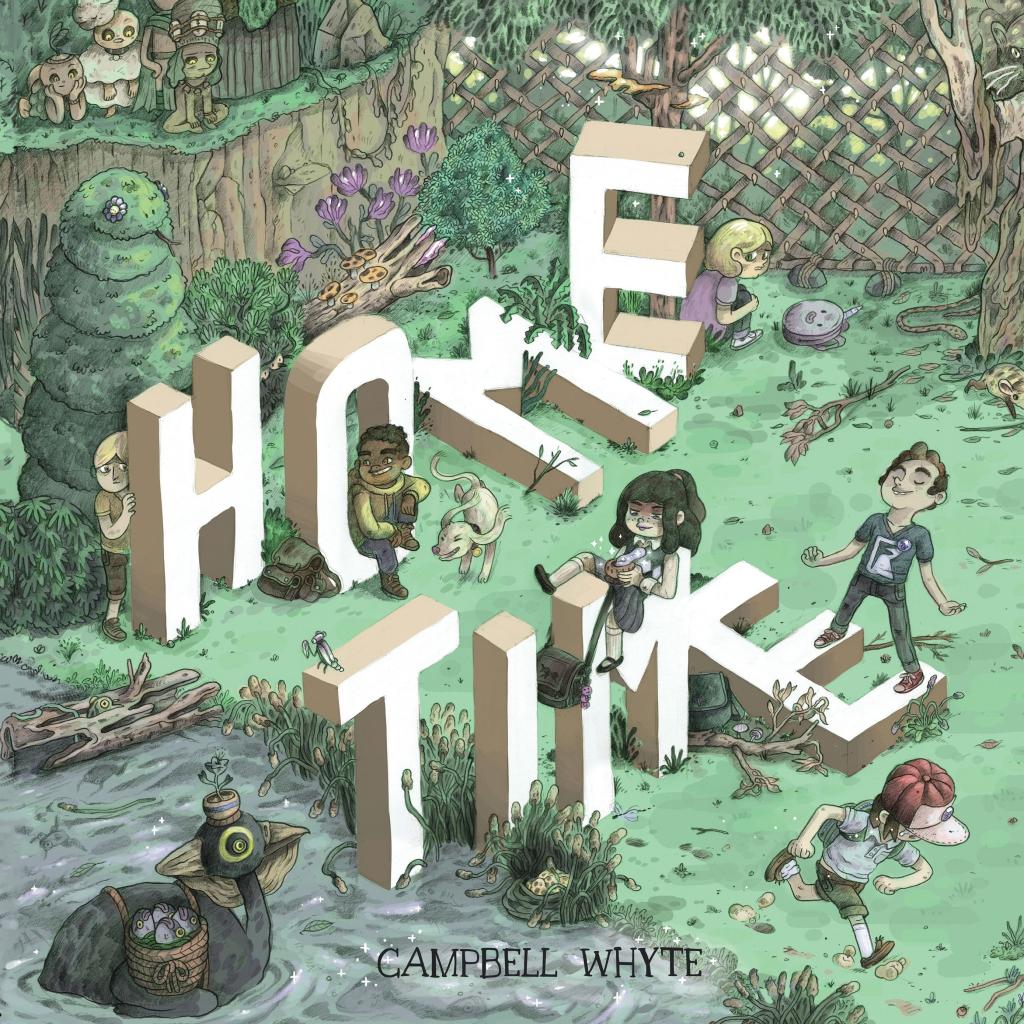
Both Home Time and Luna Express have come out through Top Shelf, who have been pretty big with publishing Australian creators over the past few years. How did that collaboration come together?
Campbell: Yeah, that’s a really interesting story. So they’d already published Pat Grants’ Blue before I approached them or had a conversation with them. And I think they had published something of Chris Gooch’s, but I wasn’t aware of it at the time. But I’d essentially shopped Home Time around to most Australian publishers because I was like, I’m an Australian, the work is set in Australia, it’s about Australia, it would make sense to have an Australian publisher publish it. I took it to most of the major book publishers and at that time, they all said no, for a variety of reasons that are kind of legitimate, and some of them, I think, are questionable.
At that time, most Australian publishers were not publishing comics, they had no interest in it. They had no understanding of it as a literary form. They did not value it at all, they did not see the potential in it.
So that was really heartbreaking. You’re left kind of feeling like, what’s this for? What am I doing this for? Am I going to have to just print this at home and staple it myself?
But what wound up happening was, I attended a Supanova convention in Perth. They fly out some comics people, and usually they’re writers or artists. But this time they had flown out Ted Adams, who at the time was [CEO and publisher] at IDW Comics, and he was doing portfolio assessments. And I was like, well, I know my stuff’s not right for IDW. But he’s coming, he’s got slots, I’ll take one. I’ll just show my stuff and I’ll chat.
I showed him Home Time, and he was lovely and spent a lot of time with me. At the end, he kind of said, “Look, it’s not quite right for us. But can you email me through this project, and I’ll send it to some friends of mine that might be keen”. And I thought it was just a nice letdown, that he was being kind. But I emailed it to him and then I think like two days later, Chris Staros, he’s the Editor-in-Chief at Top Shelf, he emailed me and was like, “My friend Ted just sent me this. Can you chat?”
I think two days later, we had a Zoom call or Skype call that was like four hours long, and he was like, “Brilliant”. And then the next day, he sent me a contract. So it went from me shopping it around for two years locally without any luck, and just a stack of rejection letters to within two weeks a contract.
What was interesting was all the things that the local publishers were wary of, [Staros] was thrilled by. Some of the things that local publishers were saying were like, “Well, this is your first book and so you’re a big risk. This is a big book, you’re not a known quantity”. Whereas, for Staros, he was like, “This is your first book! I’m so excited to get to publish your first book. This is amazing”. Some publishers told me it’s too Perth-centric. Australian publishers were like, “This is too niche, you’ve got to dial it down”. Whereas Staros is like, “I’ve never heard of Perth before. This is amazing”. The changing art styles, the size of the book; everything that turned off local publishers, was exactly what Staros was thrilled about.
Those Australian publishing stories aren’t surprising, unfortunately.
Campbell: Things are getting better. Scribe [Publications] signed a bunch of stuff, and it looks like Allen & Unwin is doing more. Allen & Unwin has been great for a long time, but they’re growing their output, which is what’s really necessary. And then we’re seeing other publishers dipping their toe into the game, which is going to be really interesting to watch, to see how they negotiate it and see who gets those opportunities. And I’m hoping it’s comics makers.
Yeah, fingers crossed. As an Australian who’s working with international publishers, what advice would you have for local comic makers who are looking to break into the industry? Whether it’s on a local level because I know you’re in charge of running the Perth Comics Art Festival, and maybe when moving from a local to a more international audience?
Campbell: I think that with every year that passes, there’s just more and more opportunities. I think every new generation of comics makers in this country is just more and more lucky and fortunate, which is wonderful. It’s what we want to grow. That’s the aim, every generation living better than the previous, right?
Digital distribution is incredible and mind-blowing, so you don’t need to necessarily think in terms of borders anymore. Putting your hat in the ring is the most important thing. Just getting out there and offering to be a part of things, putting your hand up for things, reaching out to people in a very appropriate way.
The flip side of that is to think local. Who in your community, in your local area, is doing things and then getting involved in those, because that peer support is so important, where you’re working shoulder to shoulder with people, you’re lifting each other up.
I think in terms of international opportunities, there’s such a plurality of goals and ambitions within comics. When I was an early teen, my dream was to make Spider-Man comics. I still love Spider-Man, he’s great, but that’s not my dream anymore. But that’s someone’s, and there are particular pathways and ways to get to that. But if you want to make strange, weird independent books, there’s a different pathway to that. I think it’s about identifying that and then to make work. That’s the hardest and the easiest bit of advice: Make the work. Make small work, and then make slightly bigger work. And then start slightly bigger work and share it, share it online, share it with people at festivals and fairs, and just put it out there.
The comics don’t get made until the comics get made.
Campbell: That’s it! You can’t say you’re making comics and want to career in comics, if you’re not making comics. You can’t just wait for an offer to come in. If you want to make comics, you need to make them to show people that’s what you want to do. You’ll get the opportunities based on what you’re already making.
Luna Express is currently being syndicated on Campbell Whyte’s Instagram and X account, with a collected edition coming sometime in the future.
Image: Campbell Whyte/Top Shelf
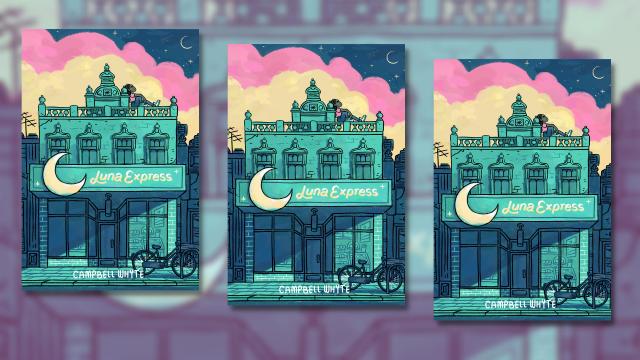
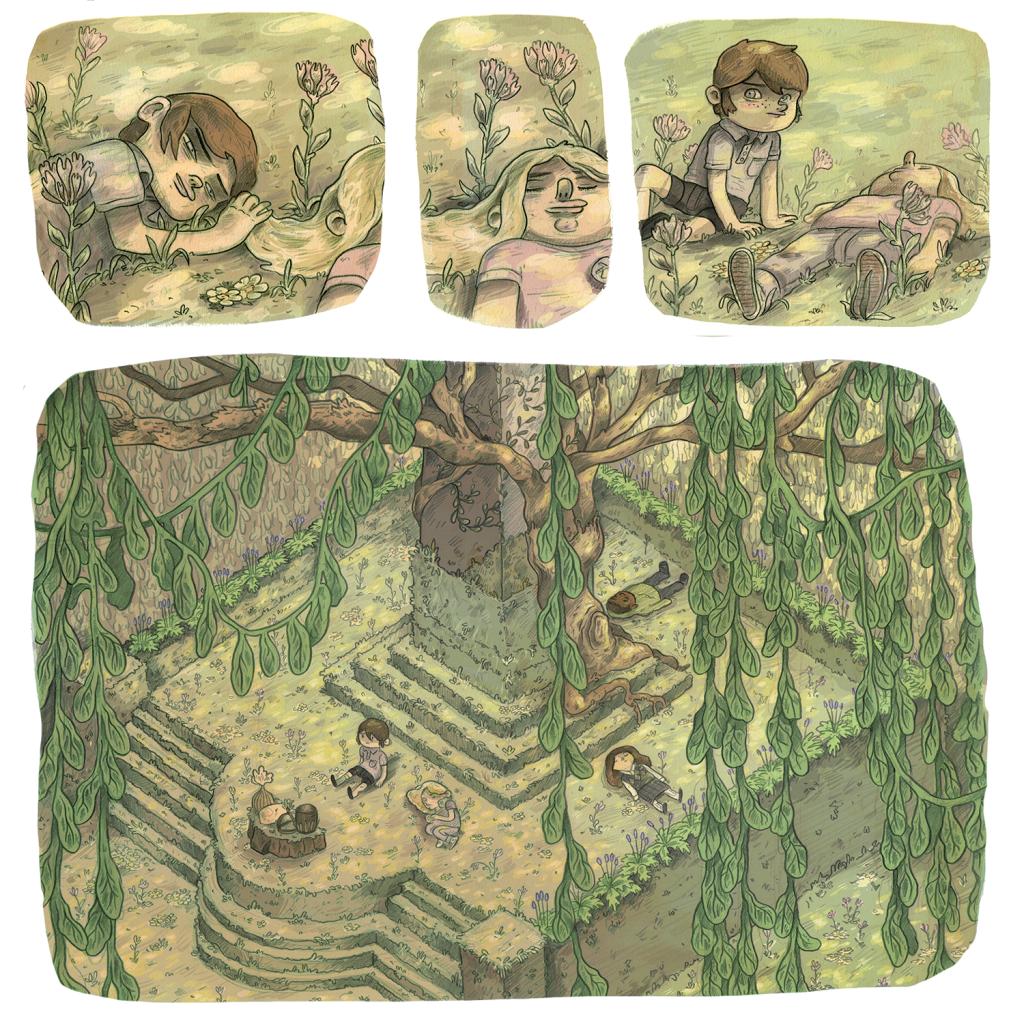
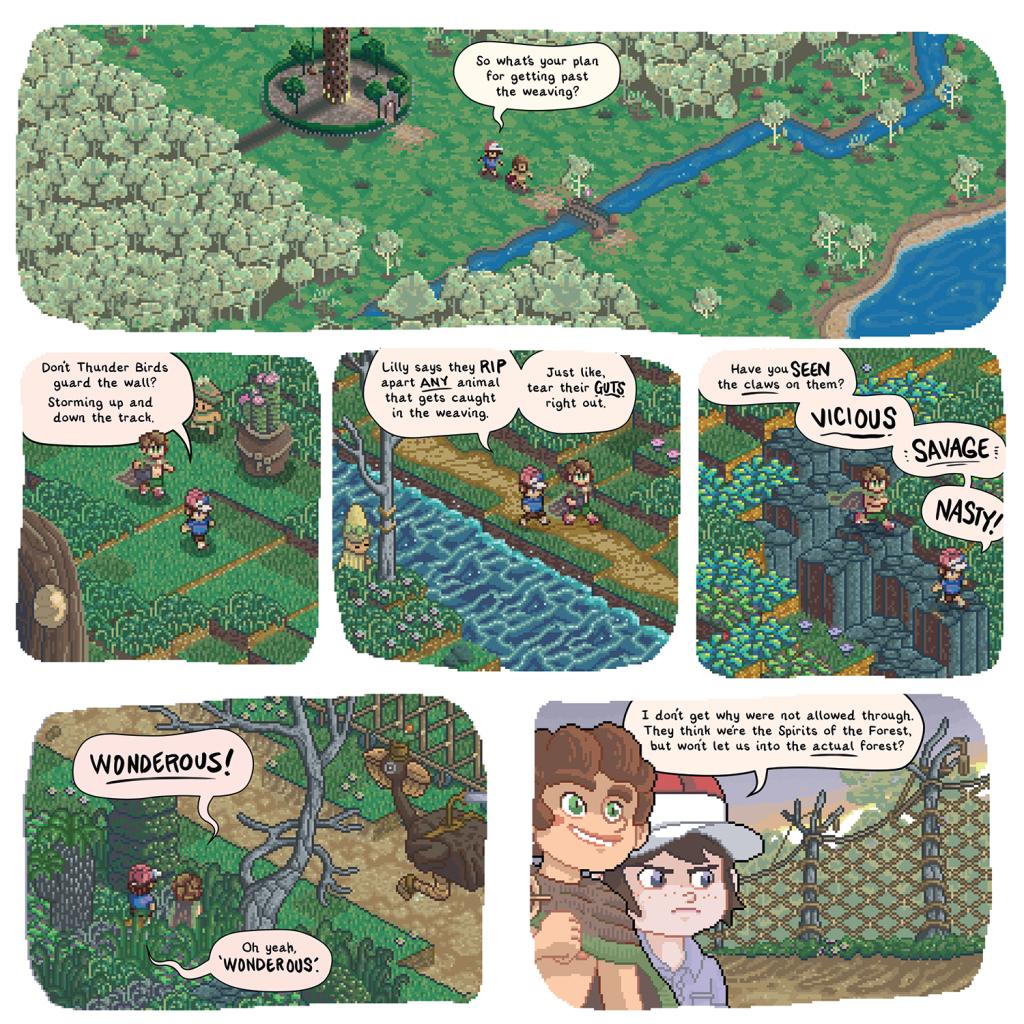
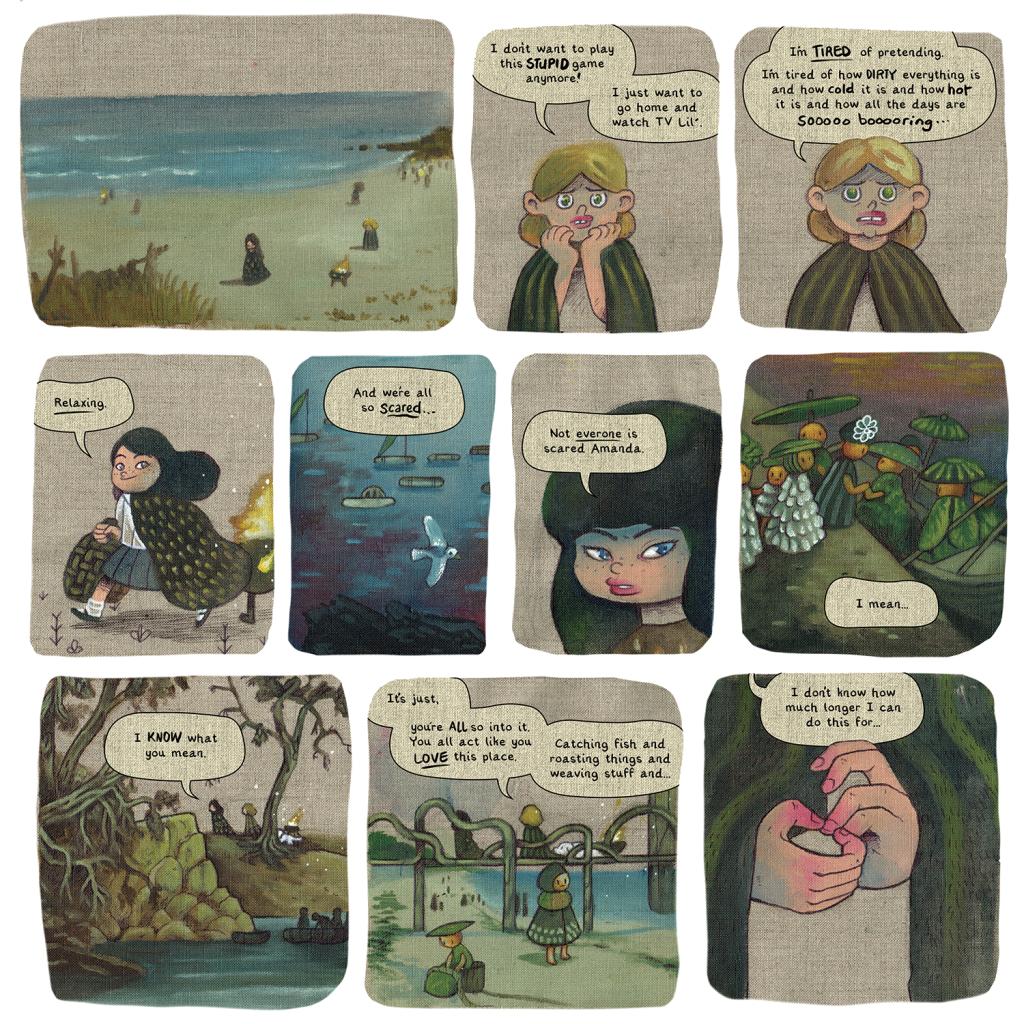
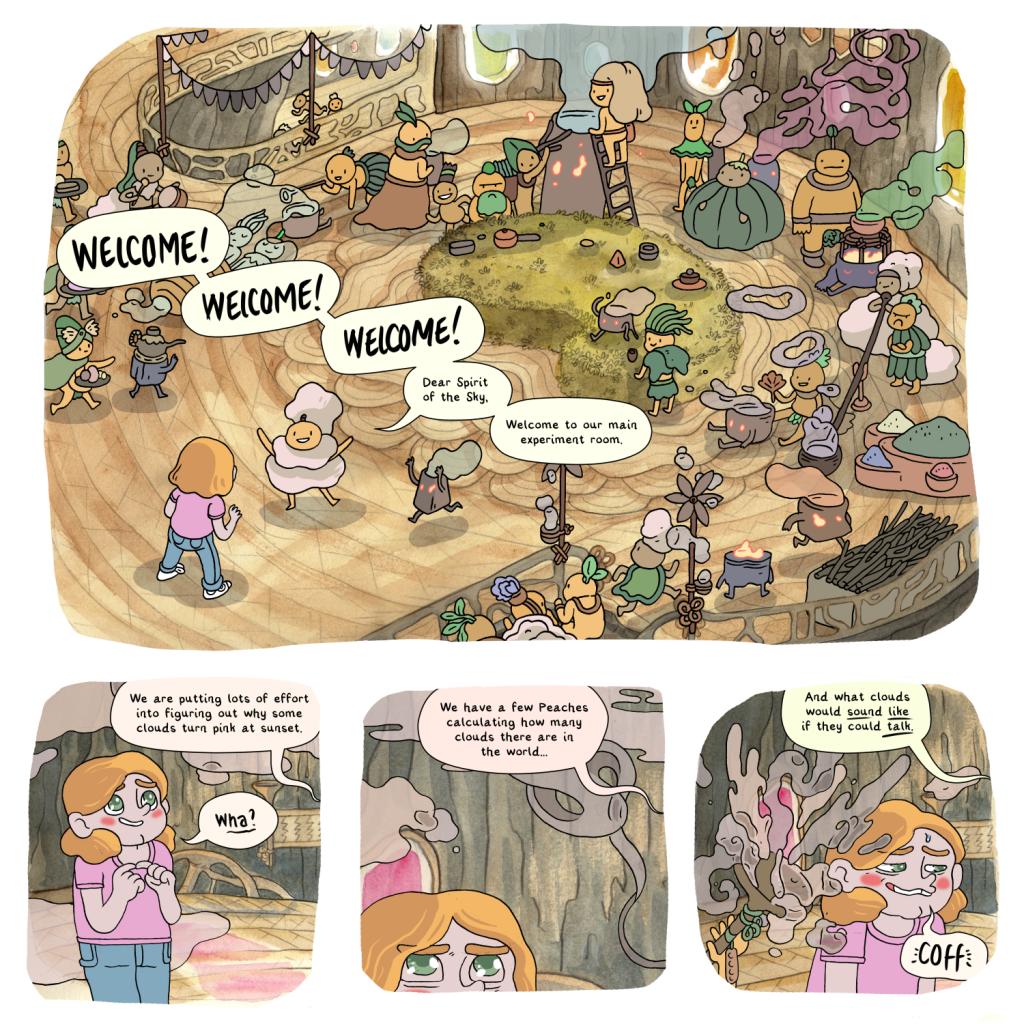
Leave a Reply